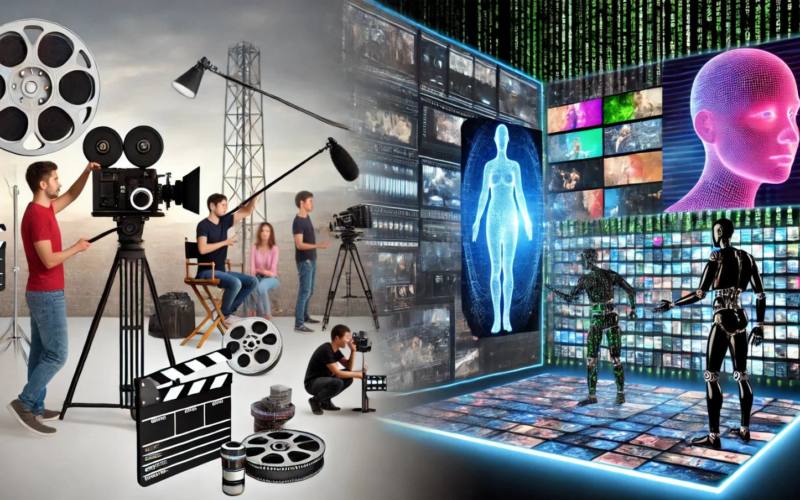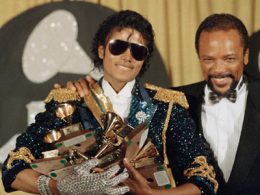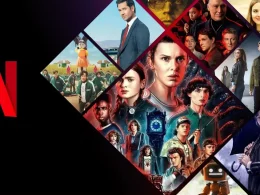The film industry is witnessing a technological revolution with the rise of AI-generated videos. Tools like Runway and Luma AI are pushing the boundaries of what’s possible in video creation. But will these AI advancements replace traditional filmmaking, or will they become part of the filmmaker’s toolkit? Let’s explore.
The Current State of AI-Generated Videos
AI video generators have made significant strides. Leading tools like Runway and Luma AI can create short video clips from text descriptions or still images. These systems use large datasets and complex algorithms to generate visuals that match given prompts. While impressive, they’re still in early stages of development.
Luma Dream Machine’s keyframes feature enhances and simplifies AI video generation by allowing users to set starting and ending frames. Users upload two images and optional text instructions, and the AI interpolates between them, creating smooth transitions. This enables creators to control character morphing, environment changes, lighting shifts, and even impossible transitions. Keyframes simplifies the creation of complex, narrative-driven content by breaking videos into defined points, making it easier to prompt the AI effectively and achieve more precise results.
Advantages of AI-Generated Videos
- Cost-effectiveness: AI can significantly reduce production costs, especially for effects-heavy content.
- Speed: AI can generate videos in minutes, compared to days or weeks for traditional methods.
- Accessibility: Non-professionals can create high-quality visuals without extensive training.
- Unique visuals: AI can create scenes that would be impossible or extremely expensive to film traditionally.
Limitations of AI-Generated Videos
- Lack of nuanced storytelling:
- AI struggles with consistent characters. It can’t maintain the same person’s appearance throughout a video, making character-driven narratives challenging.
- Complex plot points and emotional arcs are difficult for AI to convey.
- Subtle storytelling elements often get lost in AI-generated content.
- Emotional depth: AI-generated videos often lack the emotional resonance that skilled actors and directors can create.
- Limited control: While AI tools offer some customization, they can’t match the precise control of traditional filmmaking.
- Uncanny valley effect: AI-generated humans still often appear slightly off, potentially distracting viewers.
Strengths of Traditional Filmmaking
- Human creativity: Directors, writers, and cinematographers bring unique visions and interpretations to stories.
- Collaboration: The synergy of diverse talents often leads to unexpected brilliance.
- Authentic performances: Skilled actors bring depth and nuance that AI currently can’t replicate.
- Established techniques: Traditional filmmaking has a rich history of effective storytelling methods.
How AI and Traditional Filmmaking Can Work Together
- Pre-visualization: AI could rapidly generate storyboards and concept art.
- Visual effects: AI might enhance or replace green screen work and create detailed backgrounds.
- Post-production: AI could streamline editing, color grading, and sound design.
- Democratization: AI tools could allow more diverse voices to create professional-quality content.
Impact on the Film Industry
The integration of AI-generated videos is reshaping the landscape of the film industry. We’re seeing the emergence of new roles, such as “AI artists” who specialize in prompting and fine-tuning AI systems to produce desired visual outcomes. Meanwhile, traditional roles are evolving to incorporate AI tools into their workflows.
Budget allocations in film production are likely to shift. As AI takes over certain aspects of visual creation, we might see less money spent on physical production elements like elaborate sets or lengthy location shoots. Instead, more resources could be directed towards investing in advanced AI tools and hiring specialists who can effectively leverage this technology.
Perhaps most excitingly, the accessibility of AI video generation tools could lower the barriers to entry in filmmaking. This democratization of video production may lead to a more diverse range of stories being told, as creators who previously lacked access to expensive equipment or large crews can now bring their visions to life. The result could be a richer, more varied landscape of content that reflects a broader spectrum of experiences and perspectives.











